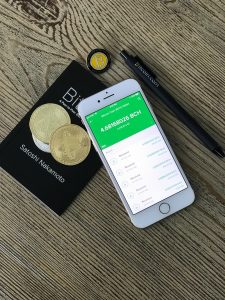Forex Pak: Understanding the Basics of Foreign Exchange Trading
Foreign exchange, commonly known as forex, is the largest and most liquid financial market in the world. With an average daily trading volume of over $6 trillion, forex trading offers immense opportunities for individuals and institutions to profit from fluctuations in currency prices. In this article, we will delve into the basics of forex trading, providing a comprehensive understanding of this dynamic market.
What is Forex?
Forex is the decentralized market where currencies are bought and sold. Unlike other financial markets such as stocks or commodities, forex is open 24 hours a day, five days a week, allowing traders to engage in trading activities at any time. This global market operates through a network of financial institutions, including banks, central banks, commercial companies, hedge funds, and retail forex brokers.
Currency Pairs
In forex trading, currencies are always quoted in pairs, such as EUR/USD or GBP/JPY. The first currency in the pair is known as the base currency, while the second currency is the quote currency. The exchange rate between the two currencies determines the price at which one currency can be exchanged for another. For example, if the exchange rate of EUR/USD is 1.20, it means that 1 Euro can be exchanged for 1.20 US dollars.
Major Currency Pairs
There are several major currency pairs that dominate the forex market. These include:
1. EUR/USD (Euro/US Dollar)
2. GBP/USD (British Pound/US Dollar)
3. USD/JPY (US Dollar/Japanese Yen)
4. USD/CHF (US Dollar/Swiss Franc)
5. AUD/USD (Australian Dollar/US Dollar)
6. USD/CAD (US Dollar/Canadian Dollar)
These currency pairs are highly liquid and offer tight spreads, making them popular among forex traders.
Bid and Ask Price
In forex trading, the bid price refers to the price at which a trader can sell a currency pair, while the ask price is the price at which a trader can buy a currency pair. The difference between the bid and ask price is known as the spread, which represents the cost of trading. The spread can vary depending on market conditions and the liquidity of the currency pair.
Leverage and Margin
One of the unique features of forex trading is the ability to trade on leverage, which allows traders to control a larger position with a smaller amount of capital. Leverage is expressed as a ratio, such as 1:100 or 1:500, and determines the amount of capital required to open a position. For example, with a leverage ratio of 1:100, a trader can control a position worth $100,000 with a capital of $1,000.
However, leverage can amplify both profits and losses, making it important for traders to exercise caution and use risk management strategies. Margin refers to the amount of capital required to maintain open positions. If the account balance falls below the required margin, a margin call may be issued, leading to the closure of positions.
Market Analysis and Trading Strategies
Successful forex trading requires a solid understanding of market analysis and the use of effective trading strategies. Market analysis can be divided into two categories: fundamental analysis and technical analysis.
Fundamental analysis involves analyzing economic indicators, news events, and geopolitical factors that can impact currency prices. Traders who employ fundamental analysis study factors such as interest rates, inflation rates, GDP growth, and political stability to make informed trading decisions.
Technical analysis, on the other hand, involves the study of historical price data, chart patterns, and technical indicators to identify trends and potential trading opportunities. Traders who use technical analysis rely on tools such as moving averages, Fibonacci retracements, and oscillators to generate trading signals.
Conclusion
Forex trading provides individuals and institutions with the opportunity to profit from fluctuations in currency prices. Understanding the basics of forex trading, including currency pairs, bid and ask prices, leverage, and market analysis, is crucial for anyone looking to venture into this dynamic market. By developing a solid foundation and employing effective trading strategies, traders can navigate the forex market with confidence and increase their chances of success.






